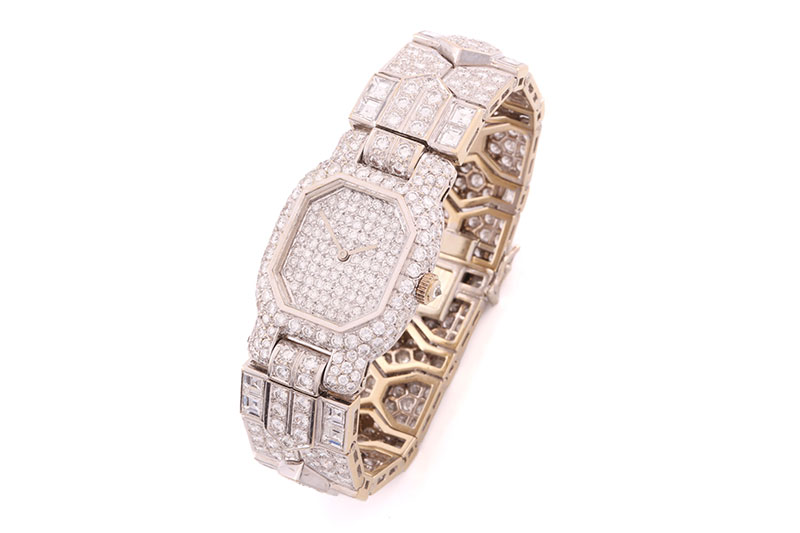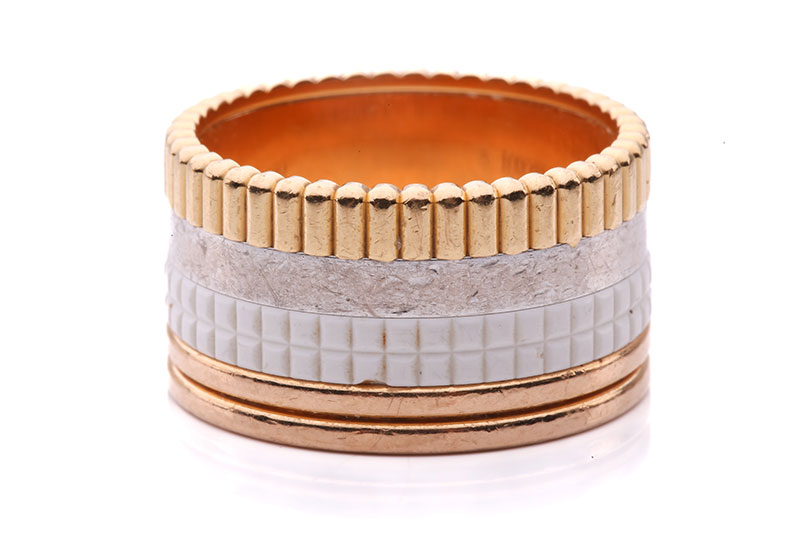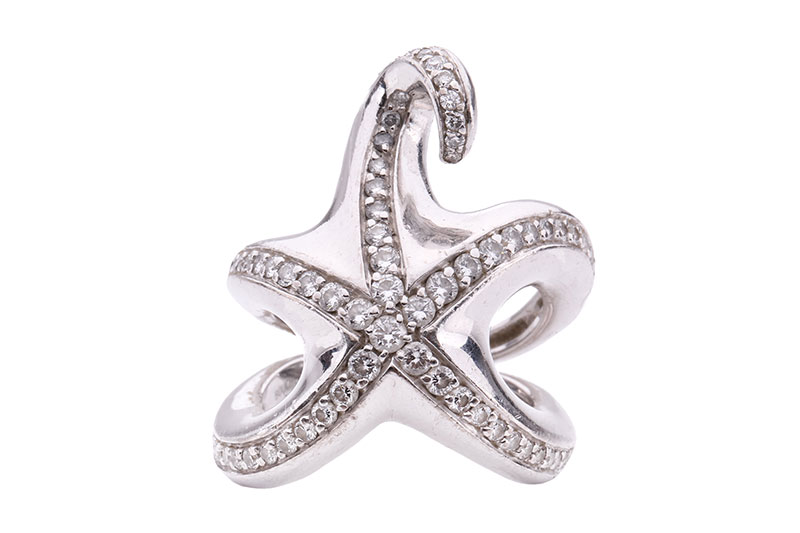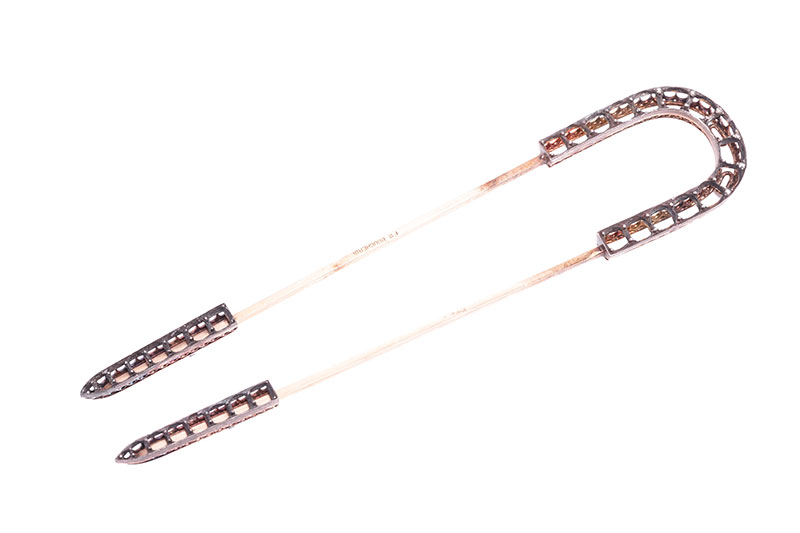A Guide to Boucheron Jewellery
Boucheron's pieces are designed to be cherished for a lifetime
28/06/2024
The French jewellery house of Boucheron is one of the oldest and most coveted brands in the luxury market. Established and under the direction of the same family for 142 years, the maison is known for its exquisite craftsmanship and innovative designs, it has long been a favourite among discerning clientele worldwide.
A diamond set Boucheron high jewellery lady's wristwatch
Born to a family of clothes makers in 1830, Frédéric Boucheron began an apprenticeship under the highly regarded Parisian jeweller, Jules Chaise, when he was just fourteen years old. He went on to work for the fashionable Tixier-Deschamps, and in 1858, when Monsieur Deschamps retired and closed his shop, Frédéric decided to set up on his own.
He opened his first boutique under the arcades of the Palais Royal in Paris, which was so successful at selling fashionable, lavishly gem-set jewels that he went on to open his own workshop in 1866. Drawing from his knowledge of fashion together with his experience in the importance of quality gemstones and craftsmanship, Frédéric distinguished himself within the trade by deviating from the typical trends of the era and focusing on a more avant-garde style.
Boucheron - a 'Quatre' white edition large ring in 18ct gold
Boucheron quickly gained a reputation for exquisite imaginative creations, exceptional gemstone selection and masterful jewellery-making techniques. Frédéric travelled extensively in search of the finest gemstones and collaborated with designers Jules Debut, Paul Legrand and Lucien Hirtz, as well as the noted chaser and engraver, Louis Armand Rault, and enameller, Charles Riffault, who perfected the technique of plique à jour. The revival of this lost art was encouraged by Frédéric and he acquired a patent for the technique.
From roughly 1864, Riffault made exceptional Renaissance-inspired plique à jour jewels and objects for Boucheron, and enamelling remained a speciality of the maison. In 1867 Frédéric’s innovative spirit for jewels was awarded a gold medal at the Paris Exposition Universelle.
Boucheron made pieces that “very few of his colleagues would have dared to make at the time.” - Fellow jeweller Henri Vever.
Boucheron - a diamond-set starfish ring
In 1876 Boucheron exhibited at the Centennial Fair in Philadelphia, a move that secured access to a whole new client base. His French jewels found favour with American high society, most notably with the extravagant and wealthy Marie-Louise Mackay who would spend vast sums with the atelier in the years to come. In 1878 Boucheron presented Mackay with a superb diamond parure which was set with an exceptional 159 carat oval blue Kashmir Sapphire. It would become one of the most beloved pieces in her collection and feature in Boucheron’s display at the Universal Exhibition that year, earning them the Grand Prix award.
In 1879 Frédéric and designer Paul Legrand created an emblematic piece, the clasp less Point d’interrogation (Question Mark) necklace, which would win another gold medal in 1889. The revolutionary asymmetrical neckpiece was purchased by Grand Duke Alexei Alexandrovich of Russia and remains a symbol of Boucheron’s liberation of both jewellery and the women who wear it.
Frédéric Boucheron was the only French jeweller to successfully participate in the auction of the French Crown Jewels in 1887. He purchased thirty-one loose stones, including the Grand Mazarin, a diamond that had passed from Cardinal Mazarin to a tiara belonging to Napoleon’s second wife, the Empress Marie-Louise. While many were curious as to who had commissioned such an impressive diamond, it turned out that Frédéric intended to give the stone to his wife, Gabrielle, as a token of his eternal love. Indeed, the serpent motif that regularly features in Boucheron designs and has been associated with the brand throughout the decades, was inspired by another gift to Gabrielle. Before departing for one of Frédéric’s foreign trips, he gave his wife a snake necklace. Believing the ancient symbol of love and protection would keep her safe in his absence, it is largely regarded as the talisman of the Maison.
A French hair pin, by Boucheron
In 1893 Boucheron moved premises to a mansion formerly owned by the Comtesse de Castiglione, becoming the first jeweller to open at Place Vendôme. Frédéric made the calculated decision of choosing number 26, as the most sun lavished corner of the square – he believed his jewels would sparkle even brighter. This location remains headquarters to this day.
Boucheron loved to create beautiful pieces for women who wanted to be admired for their fine jewels. Appealing to “the demi-monde”, fashionable daring women who wanted something unique and striking to stand out from the crowd. His faithful clientele extended beyond royalty to include celebrities and courtesans.
After Frédéric was awarded the Légion d’Honneur for his magnificent jewellery displays in 1900, he embarked on a collection of delicate designs that would come to be the epitome of the Belle Epoque era. In 1902 Frédéric passed away, leaving Boucheron in the hands of his son, Louis.
By 1903, Louis had opened stores in London and New York. The Moscow branch which was opened in 1898 was relocated to St. Petersburg in 1911. Louis ensured that Boucheron remained at the cutting edge of fashion throughout the Art Nouveau and Art Deco eras.
The early 20th century saw commissions from European royalty and aristocracy including wedding jewels for the future Lady Harcourt and several from Lady Greville, which included a tiara that would be bequeathed to Queen Elizabeth (later the Queen Mother), and is now owned by Camilla, Duchess of Cornwall. One of Boucheron’s biggest commissions was in 1928, when the Maharaja Bhupinder Singh of Patiala arrived at 26 Place Vendôme with six boxes filled with 7,571 diamonds, 1,432 emeralds, sapphires, rubies, and pearls which he instructed Boucheron to set into 149 pieces of jewellery. Two years later Louis Boucheron was commissioned by the Shah of Iran to appraise the Imperial Treasure, a task that took him many months to complete and for which the final valuation was kept secret. Louis Boucheron and his descendants were made the official Curators and Guardians of the Iranian Treasure, which remains in Tehran.
In the 1930s operations expanded to the Middle East and South America. Fred and Gérard Boucheron, Louis’s sons, joined the firm in 1936 and carried Boucheron’s jewellery across the globe, offering private viewings to important clients. In the 1970s Gérard adopted a bright-eyed cat with glossy black fur, called Wladimir, who would feature in several advertising campaigns and inspire an entire series of jewellery creations within the house.
Gérard’s son, Alain, took control of the firm in 1980. Under his direction, designers returned to materials from the beginning of the century such as rock crystal, quartz, coral, wood and turquoise, to create bold statement pieces. In 2000, Boucheron was sold to the Gucci Group and Claire Choisne has been Boucheron’s creative director since 2011.
From the iconic Serpent Bohème line to the bold and modern Quatre collection, Boucheron's jewellery offerings are diverse and captivating. Each collection showcases the brand's commitment to creativity, attention to detail, and technical prowess.
What sets Boucheron apart is its ability to create jewellery that is both timeless and on-trend. Whether you're drawn to the brand's classic elegance or its contemporary flair, Boucheron's pieces are designed to be cherished for a lifetime.
Read more
How Do I Sell Unwanted Jewellery?
How Can You Tell if Jewellery is Fine?
The World's Most Famous Jewellery Designers
Are you considering parting with any Boucheron jewellery?
With a global audience of over 10 million known buyers, Dawsons can secure the highest prices.
Get in touch with an expert Valuer for confidential sales advice, we would be delighted to help you:



